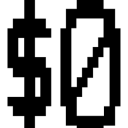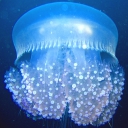It would seem that trying to embed structs and scalars for graphical elements in GOP subpatches is glitching out something nasty. Draw commands work well until the GOP property is turned on, and then the canvas size gets huge and scrolling gets lost on something like an infinite scrollbar treadmill. Ive been super eager to start designing UI elements with scalars,, but the inability to nest structs and scalars in GOP subpatches is posing some real limitations/frustrations... is anyone else experiencing this? Am I doing something wrong, or is this a bug?
-
Drawing scalars freaks out when GOP is turned on
-
ooh, just had the idea to dynamically create a struct by sending a message to pd with a loadbang... that way the object loads with the instance number instead of the '$0' as a literal... could that work well? is there a better/easier way?
-
@th8a [struct $0-mystruct float x] works
-
@th8a also you can append scalars of the same data structure multiple times to a subpatch. The [append] will give a unique pointer each time that you can use to read or modify this specific scalar.
-
[struct $0-mystruct float x] works `````That's really strange. I tried something similar and i couldn't get it to create the object. Just gave me a red box and a message in the console, 'could not create object.'
for using [append], I am afraid I dont quite follow how you mean. could you give me an example of how to set something like that up?
i am pretty new to this aspect of pd. I have some understanding as to what structs and pointers are, but i guess i'm still grasping how that all plays out in msp. Pointers have always glitched my brain a little bit to begin with... lol
I am managing to get all the scaling and stuff working well, though I must say, it gets a bit confusing the way the scalar will look huge inside the patch once GOP is set on, but close the sub patch and it's sized normal on it's parent. Is that functionality intentional or is it some reaction to the oldschool tk/tcl making sense of the updated gui? On one hand, It's hard to tell if I am witnessing glitces in the way some things are reacting, or, . on the other if I just dont yet know wth i'm doing in svg land. If they are glitches, I'd have to study a bit more before I can give any useful reports on it... Just finding control of certain things a bit disorienting.
Thanks for the help/response/info. Im still truckin along over here
-
@th8a You can look at this thread to find some examples: https://forum.pdpatchrepo.info/topic/10858/data-structures-append-and-get-what-am-i-getting-wrong/7
Without your patch it is quite difficult to tell what is going wrong.About the scaling: After creating the subpatch you usually don't need to open it ever again, so i would say you just don't have to worry about anything if it looks like you want it to on the parent...
-
that seems like sound advice. Here is where the patch is currently at. I want it to simply be a nicer looking bng button which is scalable and reusable as an abstraction. for now it's just an exercise to learn this aspect of purr-data. Eventually, I have a bunch of UI object abstractions I plan to give to the community once they are awesome. feel free to look around on it. If you do, let me know if your seeing the thing where the scalar is huge inside the subpatch window but normal on the parent. j-svbng-blu.pd
-
Well, I tried my idea of dynamically making structs per instance by setting a loadbang to send the canvas a message to create a struct and scalar with the $0 number of that instance prepended. It works, but not without causing a full on crash.... back to the drawing board I suppose...
UPDATE: ok, I had to set a delay between the message which creates the struct object and the message that creates the scalar. Looks like my old nemesis, the bug that attempts to update elements before they are created is once again the culprit. With a little delay time it is stable and each abstraction functions independently. I can copy and paste multiple instances, but if I call the object from a text box, it will still crash. go figure... my best guess is something to do with pointers getting mixed up j-svbng-blu.pd
SyntaxError: missing ) after argument list at perfect_parser (/home/th8a/apps/purr-data/lib/pd-l2ork/bin/pdgui.js:1662:48) at Socket.<anonymous> (/home/th8a/apps/purr-data/lib/pd-l2ork/bin/pdgui.js:1680:9) at emitOne (events.js:96:13) at Socket.emit (events.js:191:7) at readableAddChunk (_stream_readable.js:178:18) at Socket.Readable.push (_stream_readable.js:136:10) at TCP.onread (net.js:560:20) Segmentation fault (core dumped) [5872:5872:0908/181830.239431:ERROR:extension_function_dispatcher.cc(601)] Permission denied for nw.App.quit -
@th8a Very interesting. i opened your patch with Pd-L2ork and first thing i must say the graphics look very beautiful in Purr Data!
i still don't understand how you got the scalars into the patch without any [append] object?
Is it not possible to use [draw] onto a subpatch? It would solve the graphics all over the place issue to just put the scalars into a subpatch with gop on.i put some comments to my button example from above that hopefully give a somewhat comprehensive overview of the basic concepts of data structures in pd and how to use [append] to add scalars:
button-data-structures-mini-tutorial.pd (updated)
i also added an example on how you can safely use dynamic patching with data structures without any crashes and without any delays.

-
i still don't understand how you got the scalars into the patch without any [append] object?
You can dynamically instantiate scalars with a "scalar" message to a canvas.
In Purr Data you can create a scalar by typing the name of the template into a box.
But I haven't looked at the patch yet so I'm not sure if that's how the author is doing it.
Is it not possible to use [draw] onto a subpatch? It would solve the graphics all over the place issue to just put the scalars into a subpatch with gop on.
[draw]can be used in the exact same way as[drawpolygon]and friends. -
Clearly, I still have quite a bit to learn... lol. I'll check out this patch and see if I can understand. thanks fellas.
-
i still don't understand how you got the scalars into the patch without any [append] object?Tbh, the way you showed how to do it in your tutorial patch is completely foreign to me! I am coming from being a heavy user of MAX and somewhat recently started learning pd, so I approached it like you would in MAX where the scalar and the logic are all part of one gop subpatch. It took some shots in the dark and trial and error to get the graphic to line up without the [append] objects and all of that. Now that I see that you are putting the scalar in it's own gop subpatch that contains nothing but the scalar, it all makes a lot more sense how you are approaching this and why my way is confusing. I will rework my button patch with some of these methods and see if I can't make it work without crashing etc.
Thanks again for the help. Much appreciated. I'll post the finished product here when it's ready. -
So I am starting to get a hold of how the whole thing works. I realized that some of what is there in the tutorial patch doesn't apply while using the [draw] object, which I believe is unique to purr-data... But no matter what I do, it seems like working with dynamically created structs causes a lot of instability. I modified my patch to create scalars in a subpatch with gop on so that i can clear the scalars and drawing instructions before creating new ones to avoid crashing. What i am finding is that the entire system gets unstable. PD will crash randomly or when creating send objects or objects with $0 prefixes, saved patches will open up with some of the object's missing or malformed, freezes, even an entire system crash at times, requiring full reboot. My patch was otherwise working well, but all of the scalars and pointers being tossed around just makes everything too unstable to even work, so I finally tabled the project until I can find a better way to do it, or some solution to the instability of structs (which I remember being a problem in various versions of PD,) are solidified to run without causing constant and consistent crashing and instability. Sorry for the news of failure... What might be really cool in the of purr-data future would be if the graphical instructions weren't bounded to the TK/Tcl constructs, and were handled independently by something more modern. Since purr uses the web-browser engine for it's UI, I envision something like an HTML wysiwyg editor to handle svg graphics and animations, like Adobe Edge or Tumult hype. Those programs let me know that HTML5 and JS in conjunction can be extremely powerful for graphics, animation and interactive interfaces. A full length animated movie could be made just in HTML5, potentially... Just my two cents and wishful thinking... but it would be cool....
-
@th8a i gave the dynamic patching example, but i think you wouldn't need dynamic patching at all to make the button...
-
You are right that the button can be made without dynamic patching, however making it as a reusable abstraction which can have multiple instances on a patch would require at least the dynamic capability of structs with $0 prefixes, which I am finding to cause some instability. I suppose I can try one more time with no dynamic patching and from a fresh start to see if it can work and stay stable. Stay tuned...
-
@th8a as mentioned above [struct $0-structname] works fine in pd and Purr Data.
If you get "error: 1004-template: only one struct allowed per canvas." it means that only one struct is allowed within one subpatch.
From my experience, pd sometimes becomes unstable with data structures if you have a scalar in place and than change the struct object or the drawing instructions. Therefore the advice would be to always clear the subpatch containing the scalars first and than make changes to the struct object or drawing instructions and recreate the scalars afterwards. That way everything should be stable.
-
@ingox yea... so the best I could do was get it to be stable when the scalar is in a subpatch, however this does not allow the graphic to be scaled by dragging the gop square on parent, which to me is the biggest advantage of svg graphics in the first place. If no scaling can be easily done, may as well use pixels... You have to open the subpatch to scale it, or send a donecanvasdialog message, and then if you save it. it will scale all instances of the abstraction. $0-naming of structs and scalars works if the structs and scalars are in a subpatch of the abstraction, however for some reason it won't work if the scalar is on the top level. The only way to name a scalar on the top level with a $0 prefix is to dynamically patch it at load time, but then ofcourse this crashes and makes it unstable. So, either i can make the button but it won't be scalable from the top level, or I make it but it crashes every time you call it in a text box. Ive spent many hours now trying to work around it... but every path I take seems to lead to some glitch or dead end... Im sorta ready just to table this and wait for updates of pd to hopefully fix the problem.... Here's what i got so far though. You can call one instance and it will work (sometimes) and you can copy and paste multiple instances and that works also. If you call it more than once from a textbox, it loads, you see the button flash once, and then crash. j-svbng-blu.pd
-
@th8a I haven't looked closely at what you're doing, but as far as scaling goes:
[struct blah float x float y] [nbx] | [* 0.01] | [transform scale $1( | [draw rect 10 10] [blah]That will scale a rectangle by the desired scaling factor.
See doc/4.data.structures/pd-l2ork/ds-tutorials for more features.
-
@th8a Thanks for the explanation. I wasn't aware of the drag-and-scale feature of gui objects in Purr Data. So unless there is some event message on scaling and a method to read the gop properties to adjust a subpatch containing the scalar, yes, the only method to get the scalars to scale would be to put them directly inside the main patch.
Still the reason for the crashes is that you have the scalar in the patch and then mess around with the struct object.
The way to prevent this is:
- Delete the scalar
- Create the object [struct $0-blinky float x float y]
- Add:
[loadbang]
|
[scalar $0-blinky 0 0(
|
[s $0-blinky-cnv]
(Alternatively you can use the append method.)
This would mean that the scalar is created on load and also means that you would have to delete the scalar before saving the patch to avoid multiple scalars in the patch.
I would guess that with this you can get rid of all the delays as well.
If you can do without the drag-and-scale feature and be ok with just setting the size via creation argument or message, it is possible to do it the "clean" way with the scalar inside a subpatch.
-
Well, instead of using loadbang you can also:
- Delete the scalar
- Create the object [struct $0-blinky float x float y]
- Manually do:
[scalar $0-blinky 0 0(
|
[s $0-blinky-cnv] - Save the patch
This way you can get rid of dynamically creating the [struct] object.
Whenever you want to change the [struct] or [draw] objects, delete the scalar first and recreate it afterwards.




